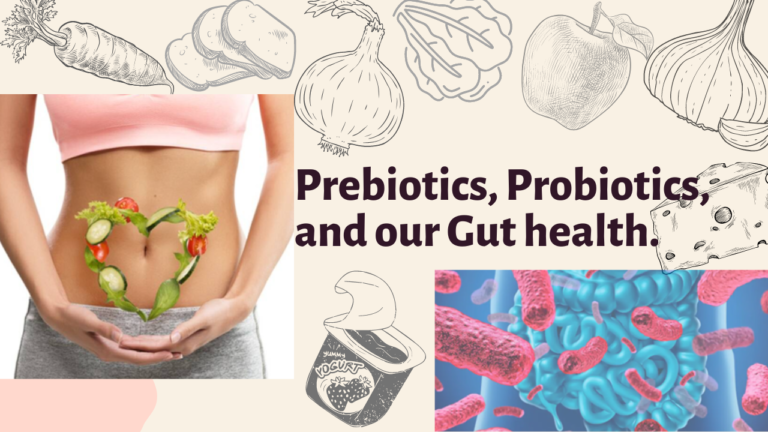PREFACE:
The words “vital anime” gave birth to the term Vitamin. Scientists of the past felt that amines were essential chemicals for our bodies. Vitamins were used for treating diseases like beriberi, pellagra, and scurvy from 1900 to 1950. Vitamins are differentiated according to their solubility in either fat or water. Read the article to know more about Vitamins.
INTRODUCTION:
The words “vital anime” gave birth to the term Vitamin. Scientists of the past felt that amines were essential chemicals for our bodies. Vitamins were used for treating diseases like beriberi, pellagra, and scurvy from 1900 to 1950.
Other vitamins were discovered while studying different functions of our body. Vitamins are organic compounds like carbohydrates, proteins, and fats. Vitamins are known as micronutrients because they are required in minute quantities for our body.
All vitamins can be produced artificially but it is always recommended to eat fresh fruits and vegetables for providing them to our body. Vitamins are needed for some specific body functions like regulation, maintenance, growth, and protection.
The majority of vitamins cannot be synthesized by our body and hence must be obtained from the diet.

Image credits – https://www.freepik.com/free-vector/gradient-rainbow-vitamin-food-infographic_7715009.htm#query=vitamins&position=22&from_view=search
CLASSIFICATION:
Vitamins are differentiated according to their solubility in either fat or water.
FAT-SOLUBLE VITAMINS –
Vitamins A, D, E, and K are fat-soluble vitamins. They can be stored in the body and require fat for their absorption.

Image credits – https://microbenotes.com/fat-soluble-vitamins-vitamin-a-d-e-and-k/
WATER-SOLUBLE VITAMINS –
B-complex vitamins and Vitamin C are soluble in water. They are easily absorbed but not stored in the body. Excess amounts of water-soluble vitamins are removed from the body through urine.

Image credits – https://www.botanical-online.com/en/diet/vitamins-water-soluble
The table below shows the classification of vitamins.
| Fat-soluble vitamins. | Water-soluble vitamins. |
| 1] Vitamin A {retinol, retinal, retinoic acid}. Precursor – carotenes such as alpha, beta, gamma-carotene and cryptoxanthin. | 1] B-complex a) Vitamin B1. b) Vitamin B2. c) Niacin: Nicotinic acid and Nicotinamide. d) Vitamin B6. e) Vitamin B12. f) Folic acid or folacin. g) Pantothenic acid. h) Biotin. |
| 2] Vitamin D- D2 and D3. | 2] Vitamin C (ascorbic acid). |
| 3] Vitamin E (tocopherols) | |
| 4] Vitamin K (quinones) – K1, K2, and K3. |
Table credits – Food Science and Nutrition [ Second Edition] by Sunetra Roday. Pg 285.
FAT – SOLUBLE VITAMINS:
VITAMIN A – Compounds retinol, retinal, and retinoic acid are named Vitamin A. Carotene is a precursor of Vitamin A and is synthesized by plants. Vitamin A is insoluble in water and stable in heat, acids, and alkalis.
UV rays can destroy Vitamin A speedily as it is oxidized easily.
Functions –
- Vitamin A maintains normal vision in dim light and overall eye health.
- It helps in maintaining healthy epithelium.
- Vitamin A is needed for proper growth, and bone and tooth development.
- Vitamin A keeps the mucous membranes healthy which helps to protect us from various infections.
Deficiency –
Deficiency of Vitamin A can cause:
- Night blindness.
- Epithelial changes.
- Photophobia.
- Xeropthalmia.
- Keratomalacia.
Sources –
Vitamin A is found in:
- Whole milk.
- Milk products.
- Egg yolk.
- Fish-liver oils.
- Butter.
- Pure ghee.
VITAMIN D –
Two important forms of Vitamin D are D2 and D3. Vitamin D is synthesized in the body and hence we do not need to depend on our diet for it.
Functions –
- Vitamin D is required to absorb Calcium and Phosphorous from the small intestine.
- Mineralization of bone and teeth.
- Regulation of Calcium and Phosphorous levels in the blood.
Sources –
Vitamin D is found in:
- Sunlight.
- Fish liver oils.
- Fortified milk.
- Vanaspati.
- Margarine.
Deficiency –
Deficiency of Vitamin D causes:
- Low absorption of Calcium.
- Rickets.
- Osteomalacia {adult rickets}. (More common in women).
VITAMIN E –
There is no proof that it can cure reproductive function problems, psoriasis, and acne but there is no evidence.
Functions –
- Prevents oxidation of Vitamin A.
- Protects normal cell membranes.
- Prevents haemolysis of red blood cells.
- Prevents oxidation of PUFA’s [ Poly unsaturated fatty acids].
Sources –
Vitamin E is found in:
- Vegetable oils (corn, soya, sunflower, safflower)
- Wheat germ.
- Whole grains.
- Legumes.
- Nuts.
- Dark green leafy vegetables.
Deficiency –
- Deficiency of Vitamin E can cause:
- Increased haemolysis of red blood cells in premature infants.
VITAMIN K –
It is important to consume it in adequate amounts as it is needed for the synthesis of Prothrombin and other blood clotting factors.
It is found as K1 in plants, K2 in the intestinal tract synthesized by bacteria, and K3 in synthetic form. It requires fat and bile salts for effective absorption.
Functions –
Formation of Prothrombin and other proteins involved in blood clotting.
Deficiency –
- Deficiency of Vitamin K can cause:
- Reduces the clotting tendency of the blood.
Sources –
Vitamin K is present in:
- Bacterial synthesis in the intestinal tract.
- Green leafy vegetables.
- Cabbage.
- Cauliflower.
- Cheese.
- Egg yolk.
- Tomato.
- Pork liver.
WATER-SOLUBLE VITAMINS –
B – complex vitamins and Vitamin C are water-soluble vitamins. Out of 11 discovered water-soluble B – complex vitamins, 8 are required for humans.
- Thiamine [B1].
- Riboflavin [B2].
- Niacin [B3].
- Pantothenic acid [B5].
- Pyridoxine [B6].
- Biotin [B7].
- Folic acid [B9].
- Cyanocobalamin [B12].
1] Thiamine [B1] –
Functions:
- Required to break down the glucose for yielding energy.
- It helps to maintain a healthy nervous system.
- It is required for normal appetite and digestion.
Sources:
Vitamin B1 is present in-
- Pork
- Liver
- Pulses
- Groundnut
- Eggs
- Wholegrains
- Parboiled rice
- Unpolished rice
- Sprouted pulses
- Soya bean
Deficiency:
Deficiency of B1 vitamins causes-
- Dry beriberi
- Wet beriberi.
2] Riboflavin [B2] –
Functions:
- Crucial for protein metabolism.
- Constituent of co-enzymes Flavin-mono-nucleotide (FMN) and Flavin-adenine-dinucleotide (FAD).
Sources:
Vitamin B2 is found in-
- Milk.
- Cheese.
- Organ meat.
- Eggs.
- Dark green leafy vegetables.
- Enriched cereal foods.
Deficiency:
Deficiency of B2 causes-
- Swelling of lips.
- Angular stomatitis.
- Glossitis.
- Sensitivity to bright light.
- Bloodshot eyes.
3] Niacin [B3] –
Functions:
Helps in maintaining the nervous system, gastrointestinal tract, and healthy skin.
Sources:
Vitamin B3 can be found in-
- Poultry.
- Fish.
- Meat.
- Groundnut.
- Beans.
- Peas.
Deficiency:
Deficiency of Vitamin B3 causes-
- Pellagra.
- Confusion.
- Poor memory.
- Delirium.
- Hallucinations.
- Dementia.
4] Pantothenic acid [B5] –
Functions:
It is an important co-enzyme for releasing energy from carbohydrates, fats, and proteins. It is also required for producing hormones.
Deficiency: Deficiency of Vitamin B5 is rare as it is widely present in foods but symptoms include Paresthesia or “pins and needles”.
Sources:
Vitamin B5 is present in –
- Meats.
- Whole grains.
- Broccoli.
- Avocados.
- Yoghurt.
5] Pyridoxine [B6] –
Functions:
- Important for synthesis and breakdown of amino acids.
- Production of antibodies.
- Coverting linoleic acid to arachidonic acid.
- Synthesis of haem.
Deficiency:
Deficiency of Vitamin B6 causes-
- Hypochromic anaemia.
- Depression.
- Soreness of tongue.
- Sleepiness.
Sources:
Vitamin B6 can be found in –
- Liver
- Kidney
- Meat
- Wholegrain cereals
- Soya beans
- Groundnuts.
6] Biotin [B7] –
Functions:
It assists the body to metabolize proteins, fats, and carbohydrates. Biotin is synthesized in the intestinal tract.
Sources:
Vitamin B7 can be found in-
- Egg yolk.
- Liver.
- Broccoli.
- Spinach.
- Cheese.
Deficiency:
Deficiency of Biotin may cause –
- Dermatitis or inflammation of the intestines.
7] Folic acid [B9] –
It is also known as Folacin. Vitamin C is required to convert folic acid into its active form, so it can perform its functions. Folic acid, vitamin B12, and Vitamin B6 help in the creation of either red blood cells or help in preventing anaemia.
Functions:
- It is a part of specific enzymes needed for the formation of DNA and haem in the red blood cells.
- It is also essential for making RNA.
Sources:
Folic acid is present in-
- Liver.
- Kidney.
- Green leafy vegetables.
- Whole pulses.
- Yeast.
- Fermented foods.
- Sunflower seeds.
Deficiency:
Deficiency of Vitamin B9 may cause:
- Megaloblastic anaemia.
- Deficiency during pregnancy can affect the foetus’s nervous system.
8] Cyanocobalamin [B12] –
Its other chemical names are hydroxocobalamin and methylcobalamin. It is present in foods of animal origin. B12 is crucial for a healthy nervous system.
Functions:
- It aids folic acid in the synthesis and maturation of red blood cells.
- It is important for the formation of the myelin sheath around nerve fibres.
Sources:
B12 can be found in –
- Liver
- Kidney
- Milk
- Eggs
- Cheese
Deficiency:
Deficiency of B12 can cause-
- Megaloblastic anaemia or Pernicious anaemia.
- Neurological problems.
Pernicious anaemia is more common and serious. Even if enough B12 is present in a person’s diet it will not be absorbed by the body, due to the absence of an intrinsic factor in the individual’s gastric juice, consequently leading to cause deficiency of B12 and resulting in pernicious anaemia.
Vitamin C – It is also known as ascorbic acid.
Functions:
- Synthesis of collagen.
- Healing of wounds and fractures.
- Prevents oxidation of vitamin A and unsaturated fatty acids.
Sources:
Vitamin C can be found in –
- Orange
- Sweet lime
- Grapefruit
- Lemon
- Cabbage
- Capsicum
- Tomatoes
- Sprouted pulses.
Deficiency:
Deficiency of vitamin C causes-
- Defective formation of the intercellular cementing substance.
Conclusion:
Vitamins are micronutrients and are required by our body for performing vital functions. They are classified into two groups – fat soluble and water soluble. Fat-soluble vitamins are A, D, E, and K. Water-soluble vitamins are B-complex vitamins.
A deficiency of these vitamins can cause serious health problems.
Hope you found this blog useful.
References:
Food Science and Nutrition book by Sunetra Roday. [Second edition]. Chapter 19, pg. no 285.



VITAMINS 101.